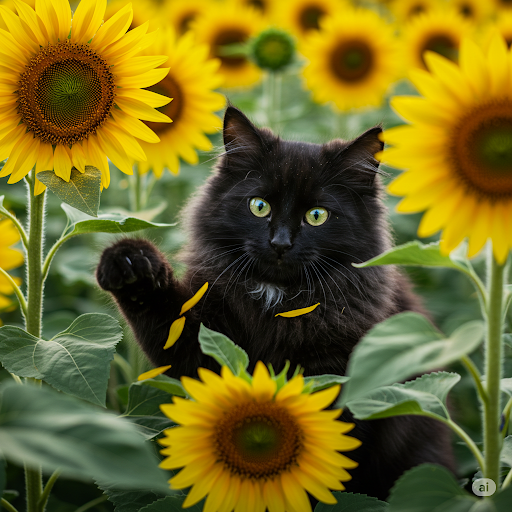
The Outdoor Buffet: What Do Cats Really Eat When They Roam Free?
Share
The Outdoor Buffet: What Do Cats Really Eat When They Roam Free?
For those of us who share our lives with indoor-outdoor cats, or who observe the fascinating lives of neighborhood strays and feral colonies, a common question arises: what exactly are these independent felines eating when they're out and about? While we might provide them with a balanced diet in a bowl, their wild instincts often lead them to a varied menu found in the great outdoors.
The truth is, cats are obligate carnivores, meaning their bodies are designed to derive essential nutrients primarily from animal protein. Their diet in the wild, or when free-roaming, largely reflects this fundamental biological need.
The Primary Catch: Small Prey Animals
By far, the most significant part of an outdoor cat's natural diet consists of small animals they hunt. Their incredible senses of sight, hearing, and smell, combined with their stealth and agility, make them formidable hunters.
- Rodents: Mice, voles, shrews, and rats are quintessential feline prey. They are abundant in many environments, provide a good source of protein and fat, and are relatively easy for a cat to subdue.
- Birds: While often romanticized as bird hunters, studies show that birds make up a smaller, though still significant, portion of a cat's wild diet compared to small mammals. Ground-nesting birds or fledglings are often more susceptible.
- Reptiles: Especially in warmer climates like Miami, lizards are a very common prey item. Anoles and geckos are agile but often fall victim to a cat's quick pounce. Small snakes can also be hunted, though this carries a higher risk for the cat.
- Amphibians: Frogs and toads can sometimes be part of the diet, though some species can be toxic if ingested, posing a risk to the cat.
Opportunistic Snacks: Insects and Invertebrates
While not a primary food source for caloric needs, insects and other invertebrates are often part of a cat's outdoor "snack" menu, especially for younger or more playful cats.
- Common Insects: Grasshoppers, crickets, beetles, moths, and flies are frequently chased, batted at, and occasionally consumed.
- Spiders: Most common house spiders are harmless if eaten, but ingesting venomous spiders (like black widows or brown recluse spiders in North America) can be dangerous and require veterinary attention.
- Nutritional Value: While bugs offer some protein, their nutritional contribution to a cat's diet is generally considered negligible, serving more as a source of entertainment and instinctual satisfaction.
The Scavenger's Supper: Human-Provided and Discarded Food
In urban and suburban environments, a significant portion of an outdoor cat's diet can come from human sources, whether intentional or not.
- Community Cat Caregivers: Many well-meaning individuals provide food for feral and stray cat colonies, ensuring they have a consistent, albeit managed, food source.
- Dumpsters and Trash Cans: Cats are opportunistic scavengers. Leftover human food, discarded scraps, and refuse from garbage bins can become a regular part of their meals.
- Pet Food Left for Other Animals: Bowls of dog food or other outdoor pet food left unattended can also attract hungry felines.
The Occasional Greens: When Cats Graze
You might observe an outdoor cat nibbling on grass or other plants. While not a primary food source, this behavior serves a purpose:
- Aiding Digestion: Grass can act as a natural emetic, helping cats vomit up indigestible matter like fur (hairballs) or bones from prey.
- Fiber and Nutrients: Some plants may provide small amounts of fiber or micronutrients.
The Risks of the Outdoor Buffet
While a cat's hunting instincts are impressive, relying solely on an outdoor diet comes with significant health risks:
- Parasites: Eating prey or scavenging puts cats at high risk for internal parasites (roundworms, hookworms, tapeworms) and external parasites (fleas, ticks).
- Diseases: Contact with wildlife and other cats increases the risk of contracting infectious diseases like feline leukemia virus (FeLV), feline immunodeficiency virus (FIV), rabies, and various respiratory infections.
- Pesticides and Toxins: Prey animals or scavenged food can be contaminated with rodenticides, insecticides, antifreeze, or other harmful chemicals.
- Injuries: Hunting can lead to injuries from struggling prey or encounters with other animals.
- Nutritional Imbalances: A diet based solely on whatever they can catch or scavenge is often nutritionally incomplete, potentially leading to deficiencies over time.
For our pet cats, even those who enjoy supervised outdoor access, providing a complete and balanced commercial cat food diet is crucial for their long-term health. While their hunting instincts are fascinating to observe, the outdoor buffet carries too many risks for it to be their sole source of sustenance.
